
Saint-Émilion is a commune in the Gironde department in Nouvelle-Aquitaine in Southwestern France.

Pomerol is a commune in the Gironde department in Nouvelle-Aquitaine near Bordeaux in southwestern France.

Barsac is a commune on the left bank of the Garonne river in the Gironde department in southwestern France.

Saint-Estèphe is a commune in the Gironde department in Nouvelle-Aquitaine in southwestern France.
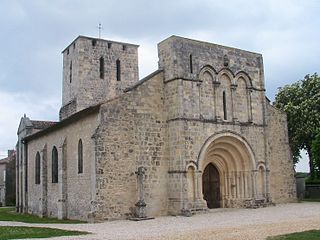
Moulis-en-Médoc is a commune in the Gironde department in Nouvelle-Aquitaine in southwestern France.

Listrac-Médoc is a commune in the Gironde department in the Nouvelle-Aquitaine region in southwestern France.

Bordeaux wine is produced in the Bordeaux region of southwest France, around the city of Bordeaux, on the Garonne River. To the north of the city, the Dordogne River joins the Garonne forming the broad estuary called the Gironde; the Gironde department, with a total vineyard area of 110,800 hectares, is the second largest wine-growing area in France behind the Languedoc-Rousillon.

Capian is a commune in the Gironde department in Nouvelle-Aquitaine in southwestern France.

Libourne is a commune in the Gironde department in Nouvelle-Aquitaine in southwestern France. It is a sub-prefecture of the department.

Blaye is a commune and subprefecture in the Gironde department in Nouvelle-Aquitaine in southwestern France. For centuries, Blaye was a particularly convenient crossing point for those who came from the north and went to Bordeaux or further south, to Spain and Portugal. Fortified since antiquity, this eminently strategic site located on the bank of a large river, was modernized at the end of the 17th century, thanks to Vauban. In 1685, the Commissaire general des fortifications of Louis XIV proposed the construction of a real lock on the Gironde in order to "take control of the river" and to hold Bordeaux in case of a revolt. It is then that the citadel of Blaye was built, constituting the major element of the estuary control system. Dominating the urban landscape, this imposing building has been listed as a UNESCO World Heritage Site since 2008, as part of a group of structures engineered by Vauban, in testimony to their global influence on military architecture and planning over the next few centuries.

Pessac is a commune in the Gironde department in Nouvelle-Aquitaine in southwestern France. It is a member of the metropolis of Bordeaux, being the second-largest suburb of Bordeaux and located just southwest of it. Pessac is also home to Bordeaux Montaigne University and the Institut d'études politiques de Bordeaux.

Saint-Sulpice-de-Faleyrens is a commune in the Gironde department in Nouvelle-Aquitaine in southwestern France.
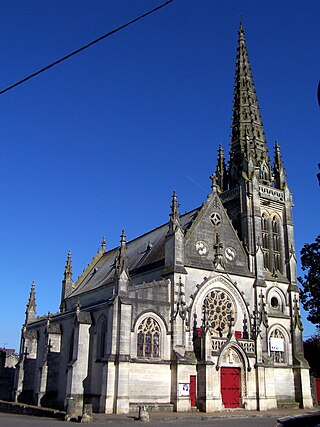
Podensac is a commune in the Gironde department. It is located in the famous Bordeaux wine region in Nouvelle-Aquitaine.

The wine regions of Bordeaux in France are a large number of wine growing areas, differing widely in size and sometimes overlapping, which lie within the overarching wine region of Bordeaux, centred on the city of Bordeaux and covering the whole area of the Gironde department of Aquitaine.

Cubzac-les-Ponts, also referred to as Cubzac, is a commune of the Gironde department in Nouvelle-Aquitaine, a region in southwestern France. Located 20 km northeast of Bordeaux, it is a crossing point of the river Dordogne. Cubzac has three bridges, one designed by Gustave Eiffel.
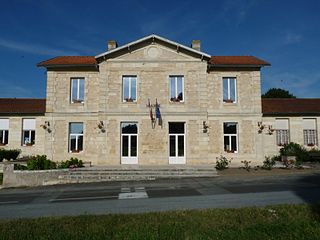
Le Fieu is a commune in the Gironde department in Nouvelle-Aquitaine in southwestern France.

Vayres is a commune in the Arrondissement of Libourne, in the Gironde department in Nouvelle-Aquitaine in southwestern France.

Saint-Émilion is an appellation d'origine contrôlée (AOC) for wine in the Bordeaux wine region of France, where it is situated in the Libourne subregion on the right bank of the Dordogne. As a cultural landscape demonstrating a long, living history of wine-making, Saint-Émilion was registered as a UNESCO World Heritage Site in 1999.
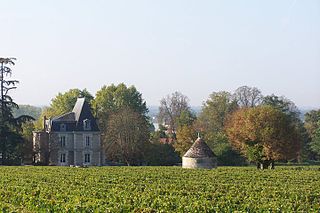
Ponty Vineyards, also known as Vignobles Ponty, is a wine estate of Bordeaux wine in the Canon Fronsac appellation located on the right bank of the river Garonne, 25 km away from Bordeaux, close to the city of Libourne. Close to the Pomerol and Saint-Emilion regions, Canon Fronsac’s landscape of plateaus and hills snuggle into the confluence of two rivers: the Isle and the Dordogne. Winemaking has been the family business for the Ponty family for more than five generations. The vineyard currently produces five wines: Chateau Grand Renouil, Chateau du Pavillon, Petit Renouil, Clos Virolle, and Blanc de Grand Renouil.
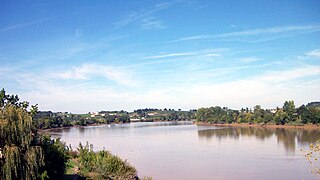
Fronsac is a wine growing region named after the commune of Fronsac on the right bank of the Gironde estuary in Bordeaux. It includes the following communes: La Rivière, St.-Germain-la-Rivière, St.-Aignan, Saillans, St.Michel-de-Fronsac, Galgon, and Fronsac. Canon Fronsac AOC is a sub-appellation contained entirely within Fronsac AOC in the southern area nearest the river Dordogne.
























